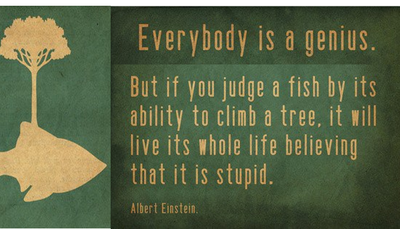Like many talent management systems, the annual performance review process is quickly becoming an ineffective tool for modern employees. Many employees dread them, while others even report that they create disengagement and negatively impact their creativity. Managers find the process cumbersome and untimely, at a frequency that is unable to impact performance when needed. This is especially true of Millennials. However, eliminating performance reviews is a complex discussion.
Recently, a number of high profile companies, including Motorola, Deloitte, Microsoft and Adobe, have made headlines for doing the unthinkable: they got rid of performance reviews and/or ratings. Recently, the well-known consulting firm Accenture joined the list and did away with its performance system, opting instead for a process that is supposed to offer more real-time feedback from managers and forward looking.
Missing the Mark
According to the Conference Executive Board, approximately 6 percent of Fortune 500 organizations have replaced traditional performance reviews. However, the changes often lack grit and from a Millennial perspective, still don't meet the need. Let's break down the three most common errors:
Error 1: Eliminating Forms and Systems Entirely. Many organizations have eliminated forms and systems that document the reviews have taken place. Regardless of frequency or level of formality, if not tracked or measured, reviews often don't happen and this increases the likelihood of employees not getting valuable career feedback they deserve.
Error 2: Eliminating Performance Ranking Without Adequate Replacement. Performance ranking removal deprives organizations of a valid and equitable means of calibrating performance, identifying who should be promoted, developed, terminated and who should be considered for succession planning purposes.
Error 3: Lack of Cultural Aptitude. Many organizations spend so much time on revamping the process and they fail to address the cultural climate and practices that create the angst and fear around the performance review process.
Meeting the Needs of Modern Employees
What does it look like when an organization gets a performance review redesign right? For that, we need look no further than Juniper. While the changes that they have made seems to have made a significant impact with all of their staff, I am confident that they resonated most strongly with the Millennial employees. The modifications made has resulted in 82% of their employees reporting their reviews were valuable.
Choice 1: Culture Focused. The organization began with "why". Juniper wanted a process that empowered employees and helped to drive disruptive innovation. They consulted with neuroleadership and organization transformation thought leaders, experts in what works in today's environment, to develop a more simplified, easier to understand, scenario-based performance framework.
Choice 2: Purpose Driven Performance Management. Juniper took a holistic approach that focused first on future employee capabilities and career progression, followed by past organizational contributions. Senior Leaders and direct managers create their objectives first and employees are free to set their own contribution goals based on both their leaders' and their own career aspirations. This creates buy-in and helps employees to easily link how their contributions impact the organization. This is especially important for engaging Millennials, who tend to be more purpose driven.
Choice 3: Effective Method. Juniper implemented a "Conversation day", where performance discussions have become a two-way, peer-like conversation where decisions about performance are made together. Managers are trained to discuss future elements of performance first, which reduces the stigma of negative development feedback.
Choice 4: J Players. Juniper eliminated forced ranking and instead aims for 100% "J Players", meaning an employee meets expectations against four performance elements. Performance competencies and related talent scenarios are so clearly communicated throughout to organization, 65% of those with severe performance challenges choose to leave the organization.
Choice 5: Individual Contribution Basis. Employees are calibrated based on relative contribution, rather than to validate a performance score. Managers have full discretion to determine compensation based on calibration, broad pay guidance and available budget.
What's Your Strategy?
Do you agree or disagree with what works well? Are you thinking of removing performance ratings and reviews? Why?
Has your organization removed performance ratings and reviews? What benefits have you observed?

